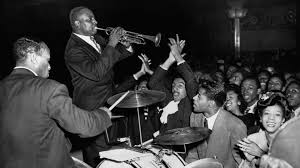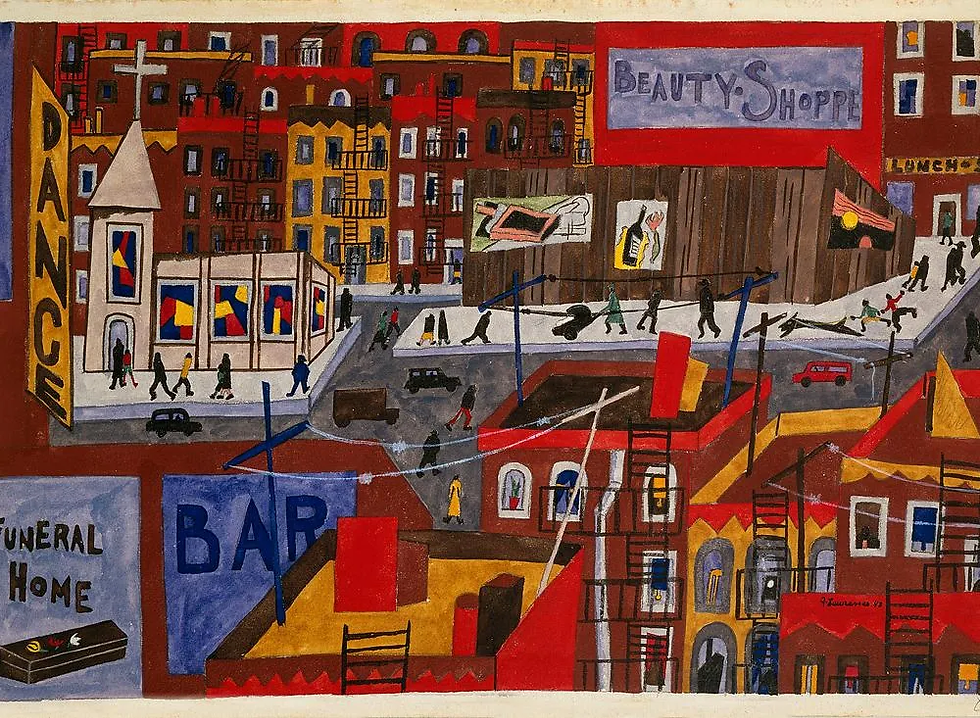The Harlem Renaissance: A Cultural Revolution in Art and Society
- Debbie Brown

- Feb 3
- 5 min read
The Harlem Renaissance, spanning the 1920s to the mid-1930s, was a groundbreaking cultural movement that emerged in Harlem, New York City. It marked a period of unprecedented creativity and intellectual fervor among African Americans, reshaping art, literature, music, and thought. Sparked by the mass migration of African Americans to northern cities during the Great Migration—a large-scale movement of African Americans from the rural South to urban centers in the North between 1916 and 1970—this cultural revolution was fueled by the collective desire to redefine Black identity, celebrate African heritage, and assert racial pride. Born from a confluence of historical events, including World War I and its aftermath, as well as the economic opportunities and social challenges of urban life, the Harlem Renaissance remains a cornerstone of American cultural history, symbolizing the transformative power of art in challenging societal norms and inspiring change.

The Harlem Renaissance began as a result of the Great Migration, a monumental demographic shift during which millions of African Americans relocated from the rural South to urban centers in the North in search of better economic opportunities, education, and freedom from racial oppression. This migration not only transformed the population landscape of cities like Chicago, Detroit, and New York City but also set the stage for cultural and social revolutions. Harlem, in particular, became the epicenter of this cultural blossoming due to its concentration of Black residents and a thriving community that offered a vibrant environment where Black artists, writers, and intellectuals could thrive. This era roughly coincided with the aftermath of World War I, which had exposed many African Americans to broader worldviews, and the onset of the Great Depression, which added economic urgency to their creative expressions. These periods of immense social change provided the backdrop for a renaissance that would challenge societal norms and redefine cultural narratives.
The Harlem Renaissance profoundly impacted both American society and the global perception of African American culture. It not only challenged pervasive racial stereotypes but also worked to dismantle the narratives that marginalized Black voices, celebrating instead the richness and diversity of African American identity, history, and achievements. This cultural awakening fostered a deep sense of pride and solidarity within the African American community, empowering individuals to embrace their heritage and assert their worth in a society rife with systemic racism. Moreover, it served as a bridge between African American culture and mainstream American society, influencing fashion, language, and artistic trends across racial lines. By providing a platform for addressing racial injustices, the Harlem Renaissance catalyzed important discussions on equality and civil rights, laying a cultural foundation for the struggles and victories of the civil rights movement that would follow decades later.
The influences behind the Harlem Renaissance were diverse. African heritage, Southern folk traditions, and contemporary urban experiences converged to inspire new forms of expression. European modernist art and literature also played a role, as did African American struggles for equality and representation. Art during this period was not confined to galleries or private collections—it was displayed in museums like the Museum of Modern Art (MoMA), celebrated in community centers, and showcased on the streets of Harlem itself. The neighborhood's vibrant cultural scene meant that art was accessible in multiple forms, from murals and storefront displays to public performances. This blending of influences and mediums created a unique cultural tapestry that remains influential to this day.
Visual art was a central component of the Harlem Renaissance, with artists using their work to explore themes of racial identity, heritage, and modernity. Notable figures included:
Aaron Douglas: Known as the "father of African American art," Douglas created bold, stylized works that blended African motifs with modernist aesthetics. His murals, such as those in the New York Public Library’s Schomburg Center, depicted scenes of African heritage and the Black experience in America.

Aaron Douglas, Aspiration (1936) Archibald Motley: Motley’s vibrant paintings captured the energy of urban Black life, particularly in Chicago. His works, such as Nightlife, celebrated jazz culture and the diversity of African American communities.

Archibald Motley, Blackbelt (1934) Augusta Savage: A sculptor and educator, Savage was a pivotal figure in promoting African American art. Her sculptures, such as The Harp (inspired by the Negro spiritual "Lift Every Voice and Sing"), emphasized the dignity and strength of Black subjects.

Augusta Savage, Lift Every Voice and Sing (1939) James Van Der Zee: A renowned photographer, Van Der Zee documented Harlem’s residents with dignity and grace. His portraits captured the elegance and ambition of the community during this transformative era.

James Van Der Zee, Daddy Grace (1938) Laura Wheeler Waring: A portraitist, Waring depicted prominent African Americans, including W.E.B. Du Bois and Marian Anderson. Her work helped highlight the achievements and sophistication of Black leaders.

Laura Wheeler Waring, Four Friends (ca. 1940s) Jacob Lawrence: Though he rose to prominence slightly later, Lawrence was deeply influenced by the Harlem Renaissance. His Migration Series vividly narrated the Great Migration and its effects on African Americans.

The Harlem Renaissance was not limited to physical art. It also included transformative contributions in literature, music, poetry, and performance:
Literature and Poetry: Writers such as Langston Hughes and Zora Neale Hurston captured the complexities of African American life. Hughes’ poetry, including works like The Negro Speaks of Rivers, celebrated Black identity, while Hurston’s novels, such as Their Eyes Were Watching God, explored themes of race, gender, and autonomy.
Music: The era gave rise to jazz and blues as dominant art forms. Icons like Duke Ellington, Louis Armstrong, and Billie Holiday revolutionized music, introducing improvisation and emotional depth that resonated across racial and cultural lines.
Philosophy and Thought: Intellectuals like W.E.B. Du Bois and Alain Locke articulated the significance of the Harlem Renaissance. Locke’s anthology The New Negro became a manifesto for the movement, advocating for cultural self-expression as a means to combat racial oppression.
Dance and Theater: Theaters like the Apollo and performers such as Josephine Baker (who gained fame internationally) showcased innovative dance styles and performances that blended African and modern influences.
The Harlem Renaissance was a cultural awakening that reshaped the arts and American society. Its legacy endures in contemporary literature, music, and art, continuing to inspire new generations. The movement not only celebrated African American identity but also laid the groundwork for the civil rights movement, proving the power of creativity to challenge injustice and redefine cultural narratives.
Find more information on the arts, life, and culture of the Harlem Renaissance at Henry Buhl Library.
References
Du Bois, W.E.B. (1926). Criteria of Negro Art. The Crisis.
Hughes, L. (1921). The Negro Speaks of Rivers. Crisis Magazine.
Locke, A. (1925). The New Negro. Albert and Charles Boni.
Powell, R. J. (1997). Black Art: A Cultural History. Thames & Hudson.
Savage, A. (1939). The Harp. World’s Fair Commission.
Van Der Zee, J. (1920s). Portraits of Harlem. Private Collections.



Comments